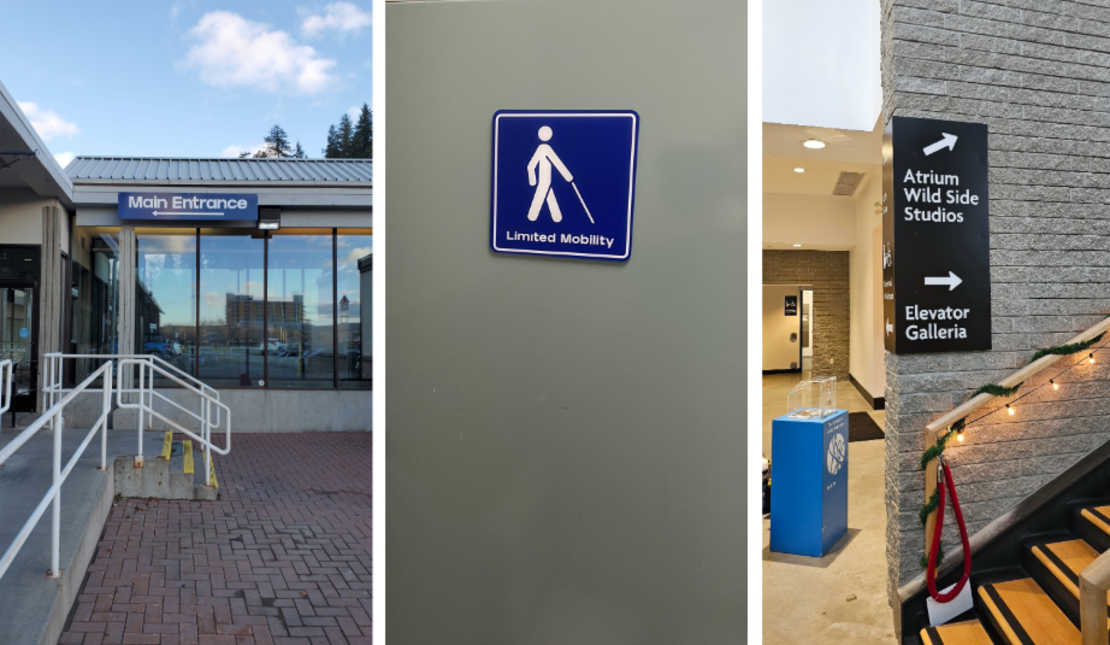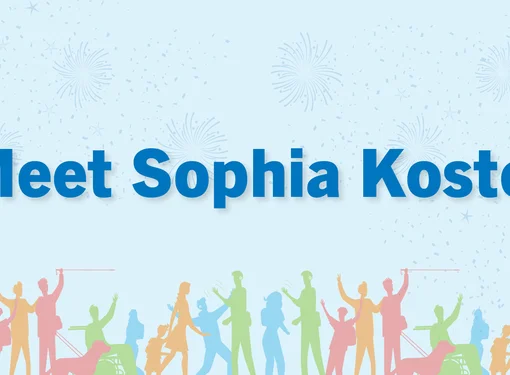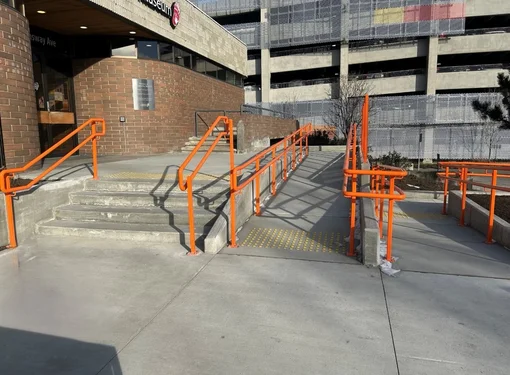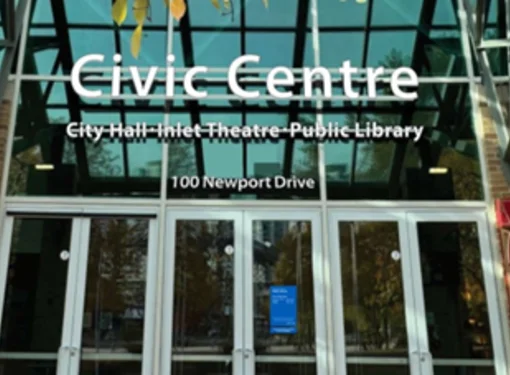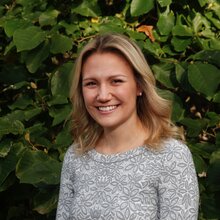Advancing Access: City of Prince George is Building a City for All
Nestled on the banks of the Nechako and Fraser Rivers, sits the city of Prince George. Home to over 76,000 people and hosts nearly eight thousand visitors annually. The city has grown significantly in the last few years, with a nearly 4% increase in population between 2016 and 2021.
“With our growing population and visitors, there is such a wide range of disabilities. Ensuring that everyone can access the city is important,” Laurie-Ann Kosec, Project Manager at the City of Prince George, said. “Like other municipalities, we are also an aging community, and we are a winter community where temporary disabilities are common. Any one of us could require assistance at any time. We also want to attract people to move here and keep living here, and make sure that it’s a comfortable and accessible environment to all.”
In 2024, Prince George was a recipient of the Rick Hansen Foundation (RHF) BC Accessibility Grants program. This program, thanks to funding from the Government of British Columbia, supported B.C. municipalities to improve accessibility for people of all abilities. Recipients of the grants receive an Rick Hansen Foundation Accessibility CertificationTM (RHFAC) rating for up to three sites to identify areas of improvement; up to $90,000 in accessibility improvement funds; a post-improvement rating to showcase enhanced access; accessibility Awareness Training for municipal staff to foster a culture of disability inclusion; and complimentary RHFAC Training tuition grants for three eligible staff.
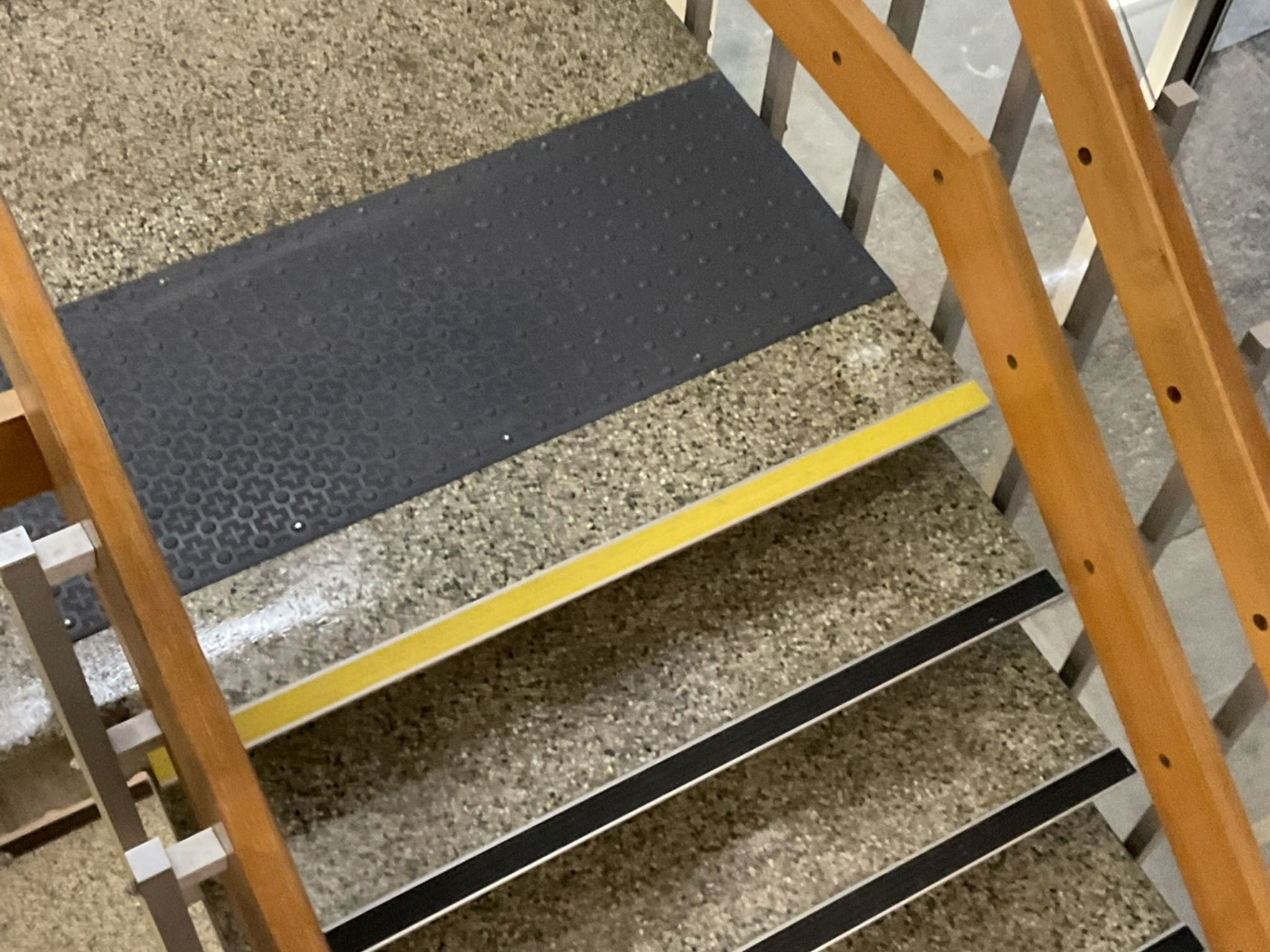
Improving access in the built environment
The City of Prince George made upgrades to two sites: Prince George City Hall and Two Rivers Art Gallery.
Going above and beyond and based on the results and experience with the RHFAC Rating, the City of Prince George worked with their RHFAC Professional, Stan Leyenhorst, a consultant with Universal Access Design, to conduct the ratings and help the city prioritize recommendations. Leyenhorst’s expertise and lived experience helped the city to determine where to invest money to make the biggest impact on users. The city also consulted with Human Studio Architecture to design stairs and ramps on both the interior and exterior of the buildings.
In Prince George City Hall, upgrades included improving access to the site by installation of ramps with contrast strips and tactile pads; adding nosing and tactile surface indicators to stairways; adding improved emergency exit signage, among other wayfinding upgrades; and adding automatic door openers for washrooms and installing a limited mobility stall in the washrooms.
“We chose the upgrades we did at both City Hall and Two Rivers Art Gallery because they were the biggest gaps identified,” Kosec explained. “By improving these items, we made the biggest impact.”
At the Two Rivers Art Gallery, ramps with contrast strips and tactile pads were installed, ‘D’ shaped handles were added to doors; upgraded nosing and tactile pads on stairs; a new accessible parking stall was created; automatic door openers installed on bathrooms and upgraded wayfinding.
“The stairs are great, having the new nosing strip on the end of each stair makes it easier going down the stairs because the stairs don’t blend together visually.” One City Hall staff member said of the upgrades. “With no strips, this was a problem, and people would have to take the elevator between floors.”
One of the focus areas of Prince George’s Accessibility Work Plan is the built environment. Making upgrades at these two sites supports this focus area, advancing the City’s overall effort to create a more accessible Prince George for all.
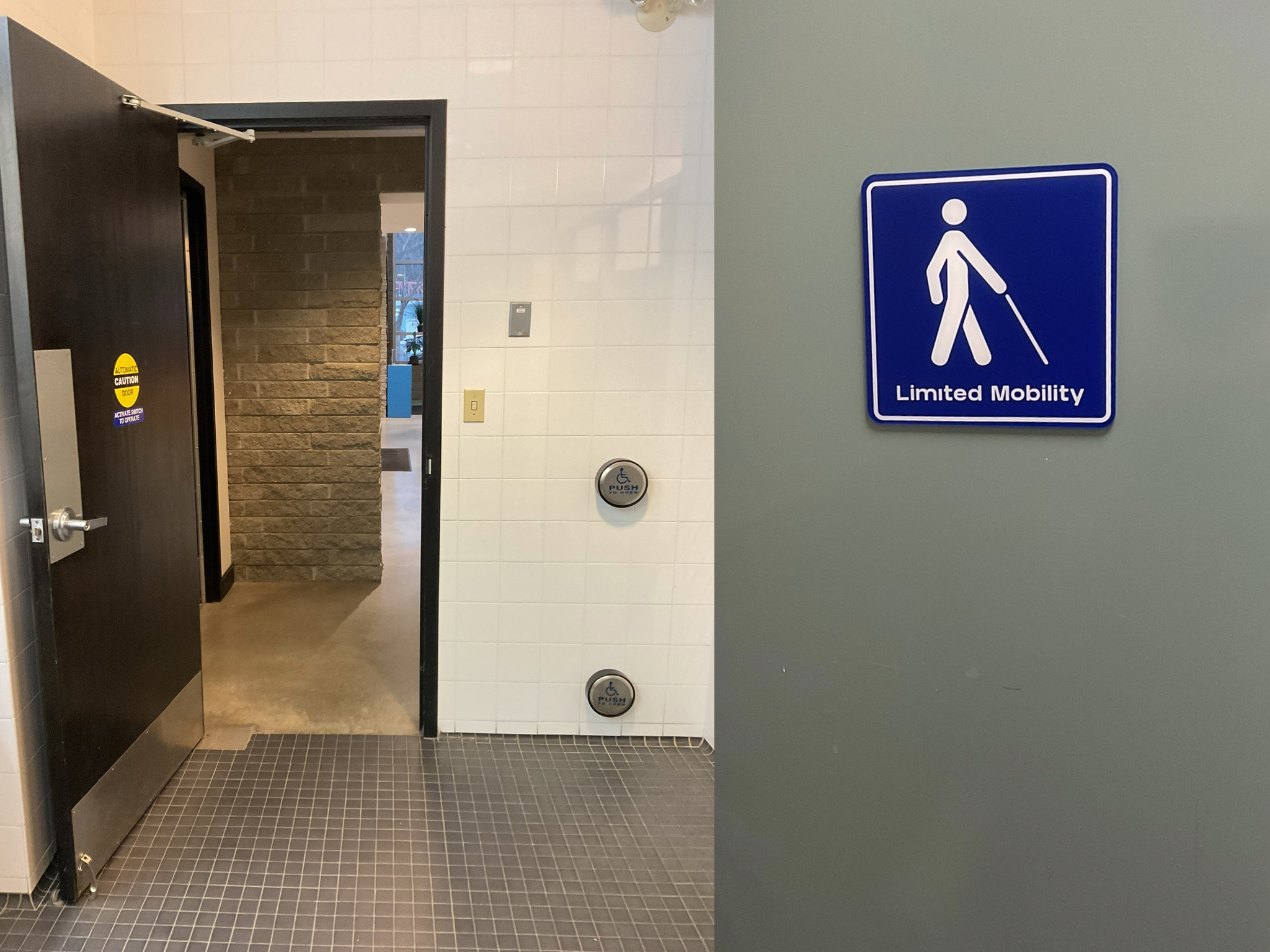
Learning to create a culture of inclusion
Three members of the City of Prince George took RHFAC Training as part of the grant program. One of them was Kosec.
Through RHAFC training, city staff were provided with enhanced education on the range of disabilities which expanded understanding of accessible built environment improvements.
“I was selected to take the training, and so was an individual in Civic Facilities and one from the Parks Department,” Kosec explained. “That way we could spread the knowledge across the city as much as we could.”
The RHFAC Professional Training course teaches individuals how to use the RHFAC methodology to rate buildings on their level of meaningful access.
“The course was fantastic,” Kosec said. “It really widened my lens on the wide breadth of disabilities and how to approach them. Once you realize the range and number of folks that are affected, it makes it really easy to commit to access.”
Kosec also explained that she really enjoyed being in the training cohort with other folks from BC municipalities. It was nice to be able to share knowledge with one another and learn together.
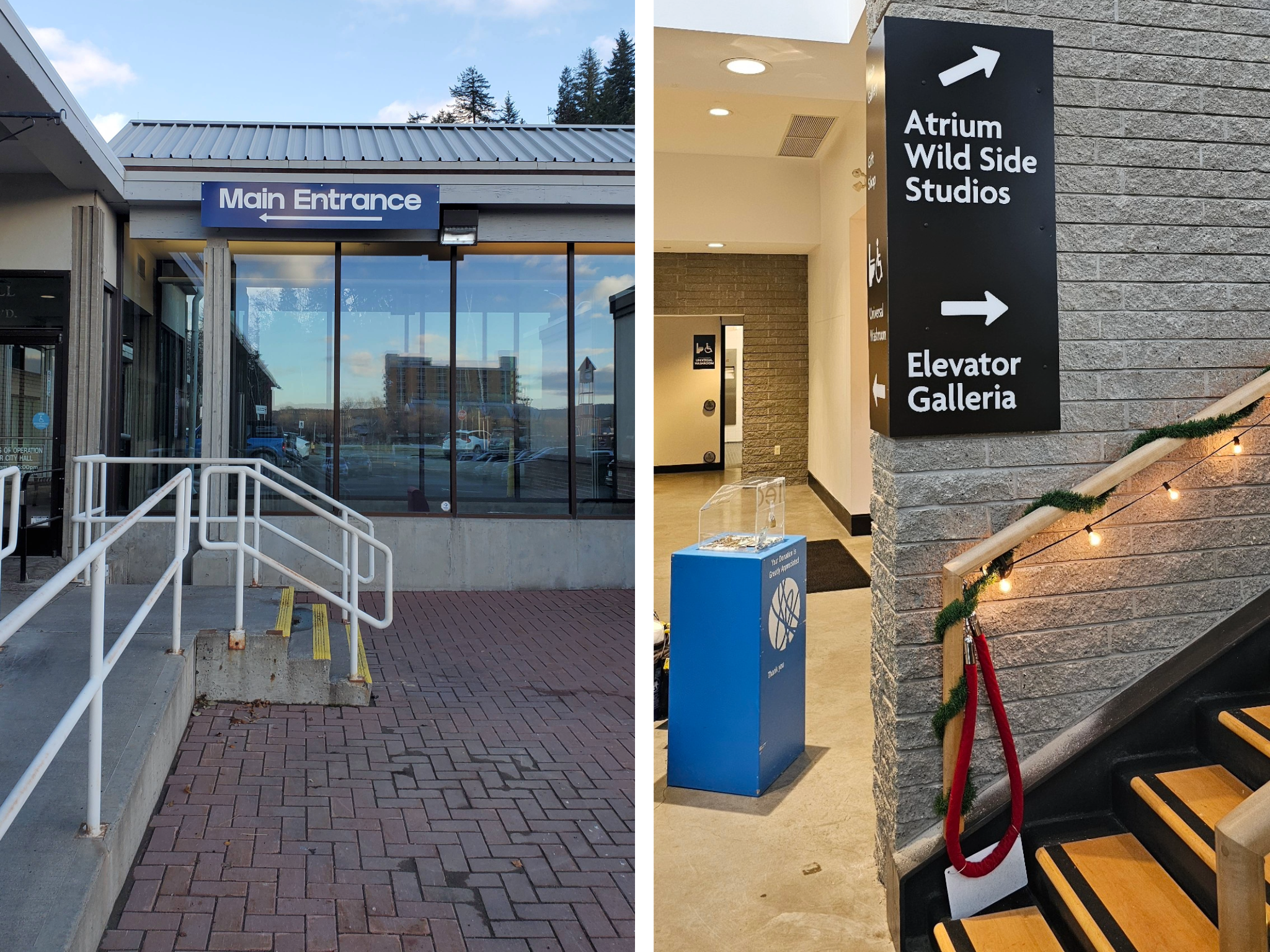
Advancing access in Prince George
“We’ve always had a budget for accessibility, but it’s limited, and having this grant allowed us to do more,” Kosec said. “Looking forward, we would like to start looking at other buildings to have them rated.”
The City of Prince George is also working to see what learnings and upgrades from the previous ratings and knowledge from training can be applied to other sites as well. Kosec noted that they want everyone to have universal access to everything the city has to offer.
As Kosec said, “access to me is having the ability at any age or ability to visit, utilize, and be comfortable in a space.”
